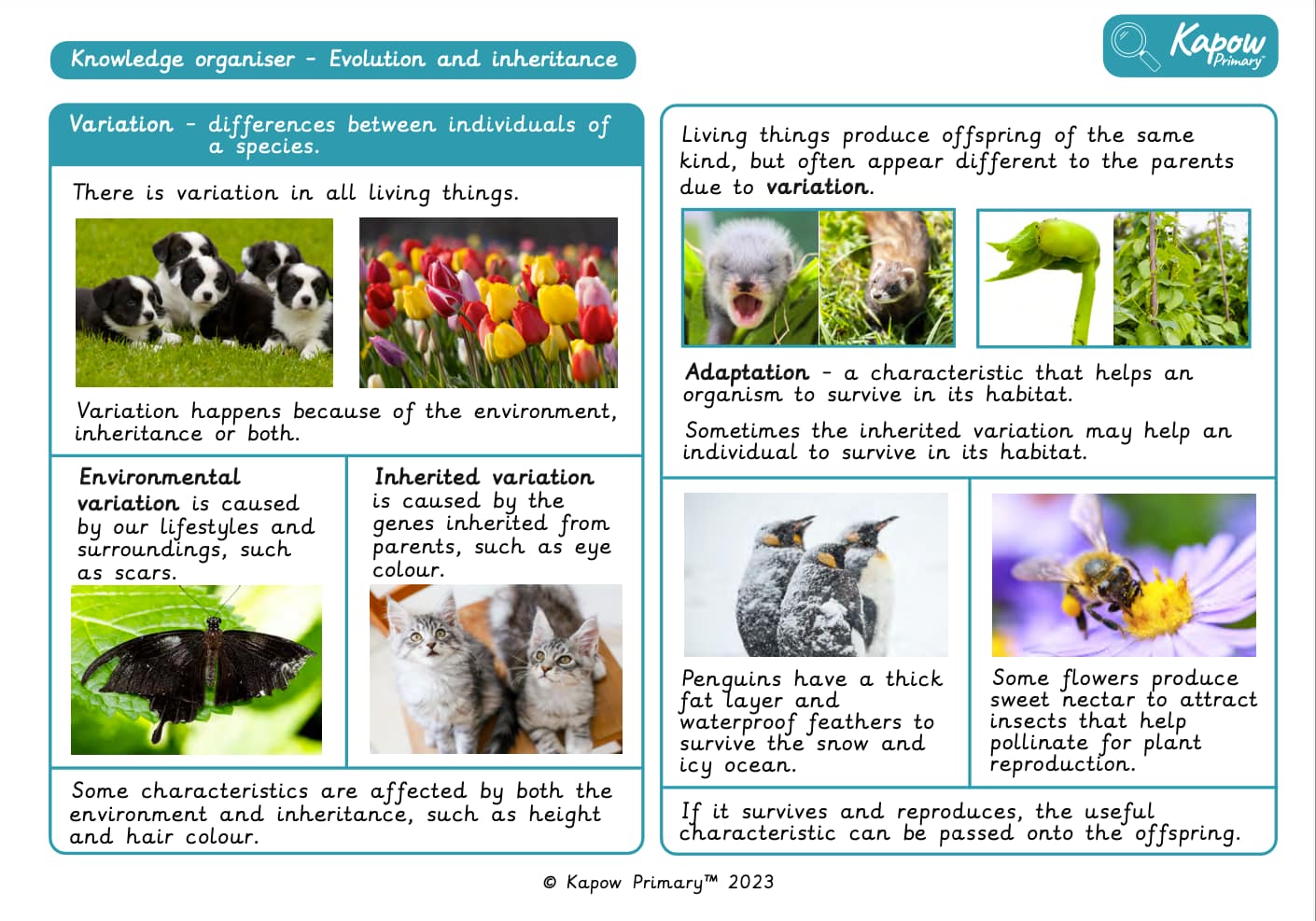
A Knowledge organiser that captures the essential knowledge and skills learnt throughout the mixed-age unit Science, Year 5/6 (B) Evolution and inheritance unit .
This resource is designed to support the children as they explore evolution and inheritance. It highlights key vocabulary and concepts, including variation, adaptation, inherited traits and environmental factors. The resource explains how living things produce offspring that are similar but not identical to their parents and how adaptations can help species survive. It also introduces natural selection and explains how evidence from fossils supports the theory of evolution. It is perfect for consolidating essential knowledge and fostering an understanding of how species change over time.
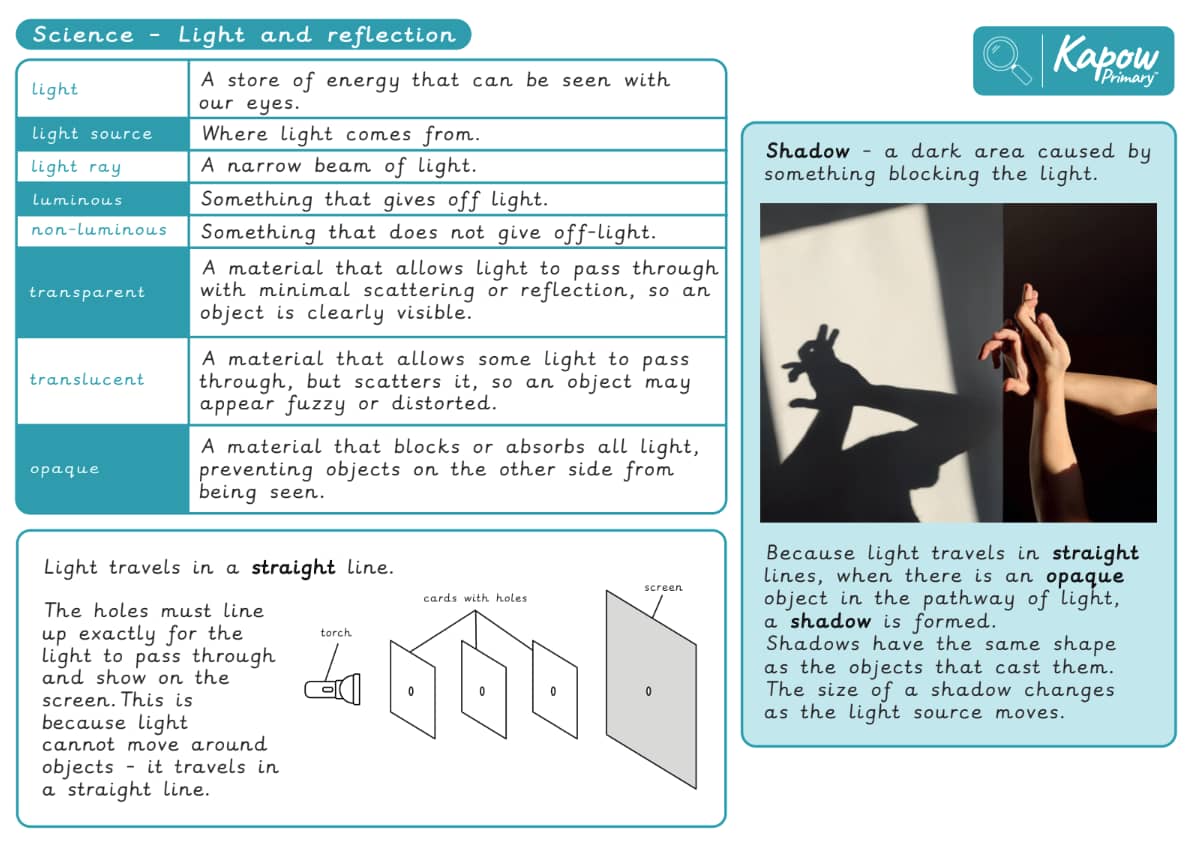
A Knowledge organiser that captures the essential knowledge and skills learnt throughout the unit Science, Y5/6 (A), Light and reflection.
This resource is designed to support the children as they explore reflection and light. It highlights key vocabulary and concepts, including how light travels in straight lines, how shadows form and how different materials affect light. The resource explains reflection, showing how light changes direction when it hits a surface and introduces ray diagrams to show the path of light. It also explores how we see objects, the uses of mirrors and how periscopes work. It is perfect for consolidating essential knowledge and fostering a deeper understanding of light and reflection in the world around us.
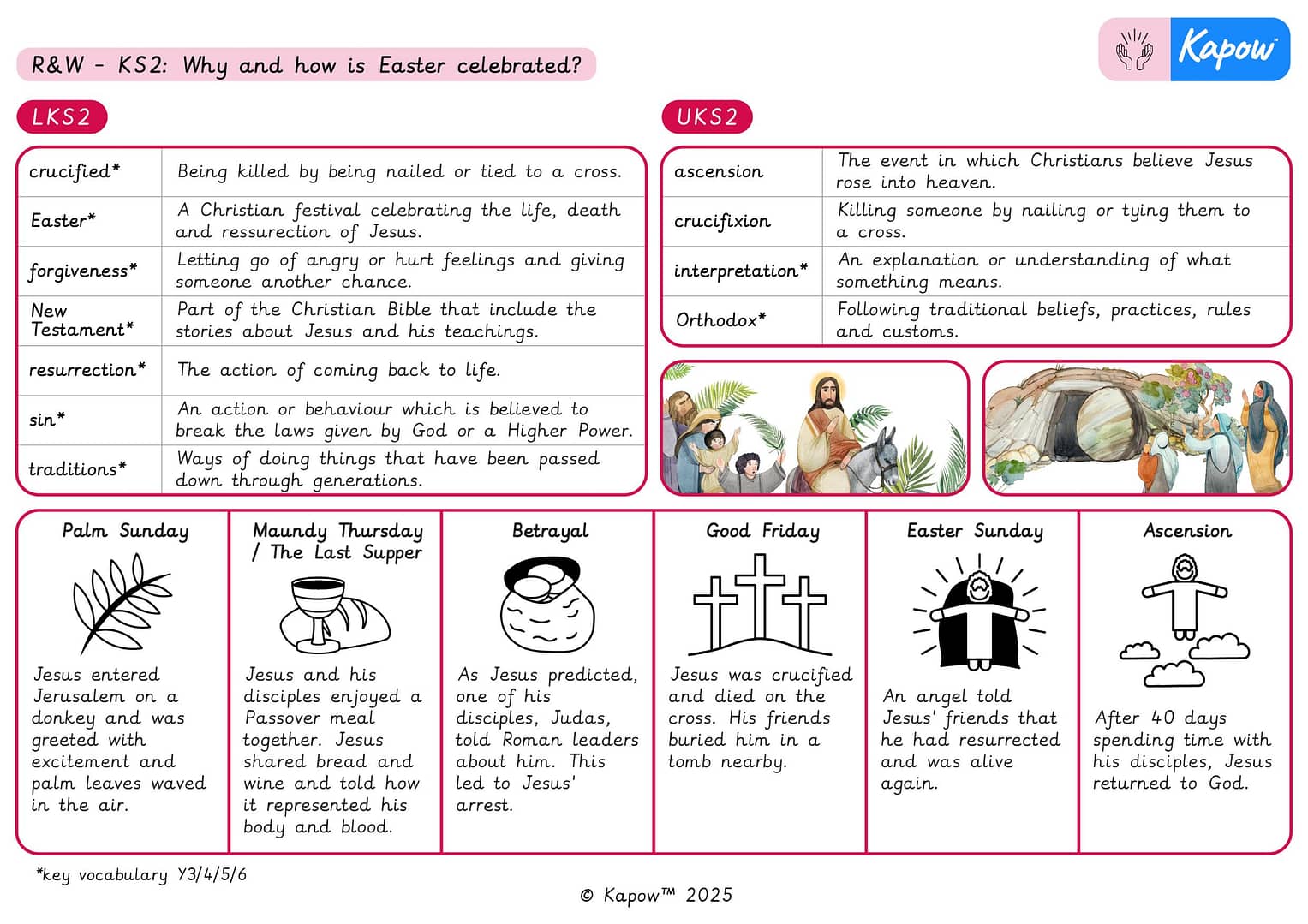
A Knowledge organiser that captures the essential knowledge and skills learnt throughout the whole school Easter collection Religion and worldviews, Why and how is Easter celebrated?.
This resource is designed to support KS2 children as they explore different aspects of Easter, including what Easter can teach about forgiveness, how Easter is celebrated around the world and why these celebrations are important for community and belonging.
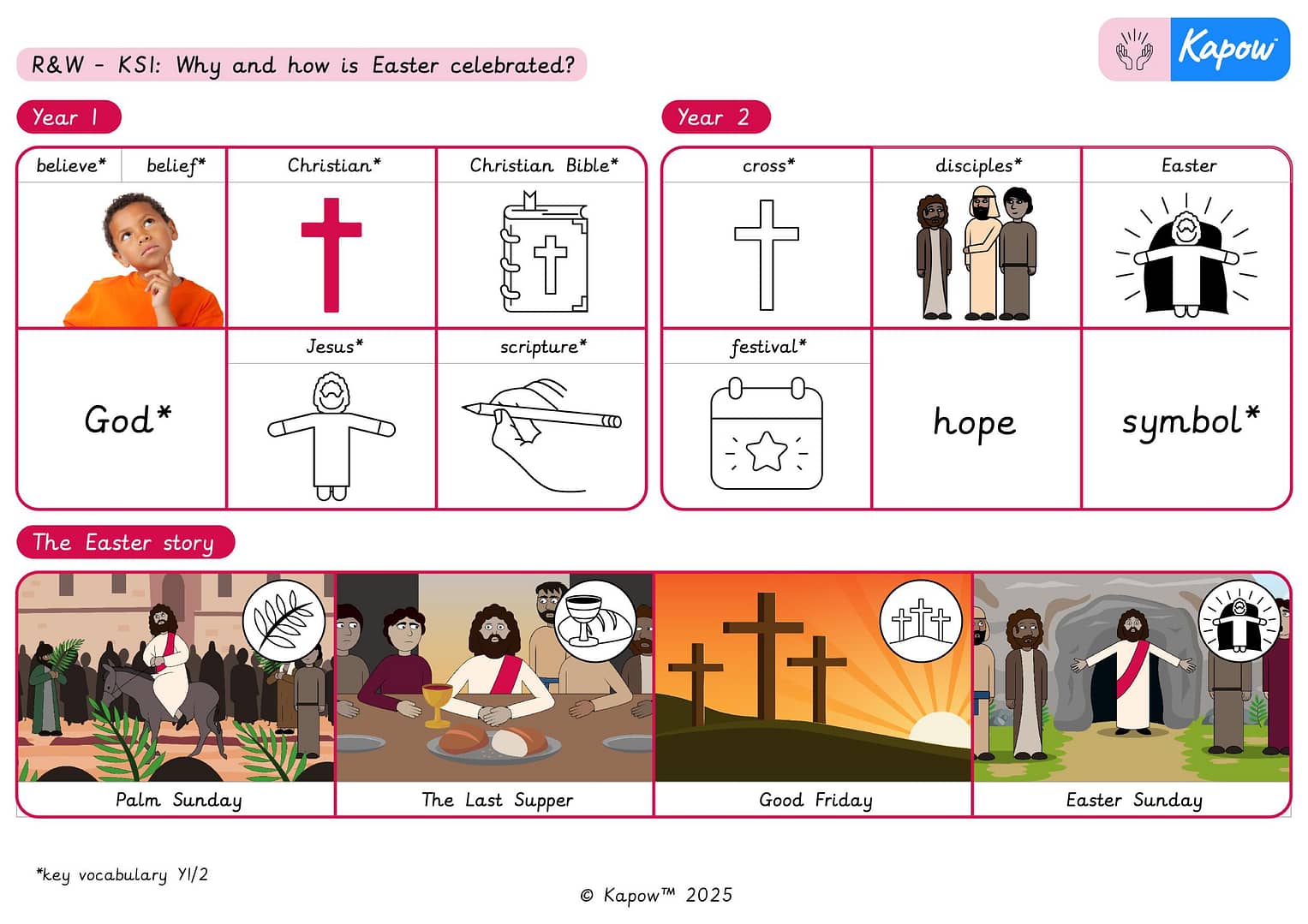
A Knowledge organiser that captures the essential knowledge and skills learnt throughout the whole school Easter collection Religion and worldviews, Why and how is Easter celebrated?.
This resource is designed to support KS1 children as they explore different aspects of Easter, including the events celebrated by many Christians at Easter, the symbolism of some Easter traditions and why Easter brings hope to some people.
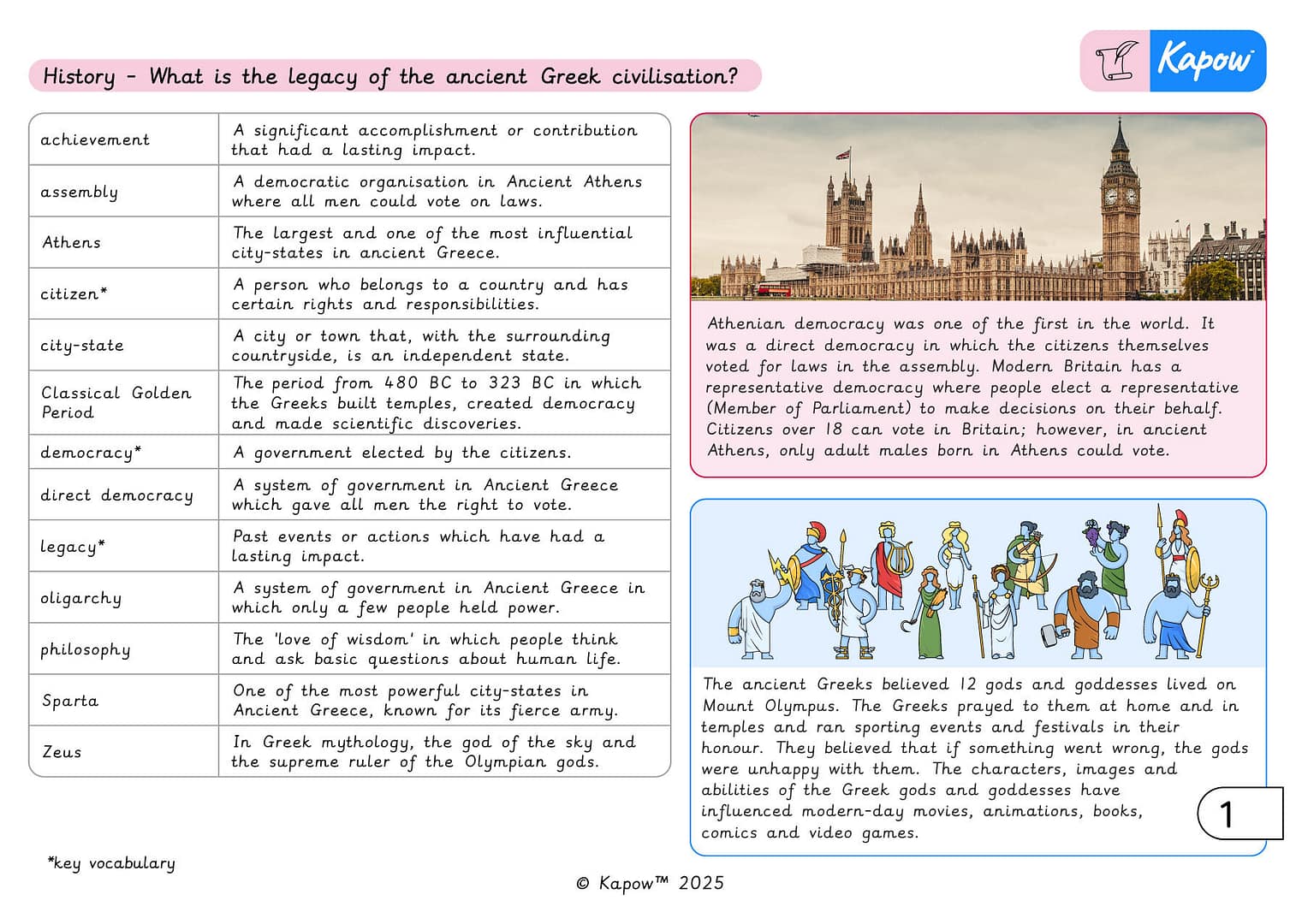
A Knowledge organiser that captures the essential knowledge and skills learnt throughout the unit History, Year 5, What is the legacy of the ancient Greek civilisation?
This History resource is designed to support children as they explore ancient Greek civilisation, including its gods and goddesses, the city-states and the enduring impact of Greek philosophers and democracy.
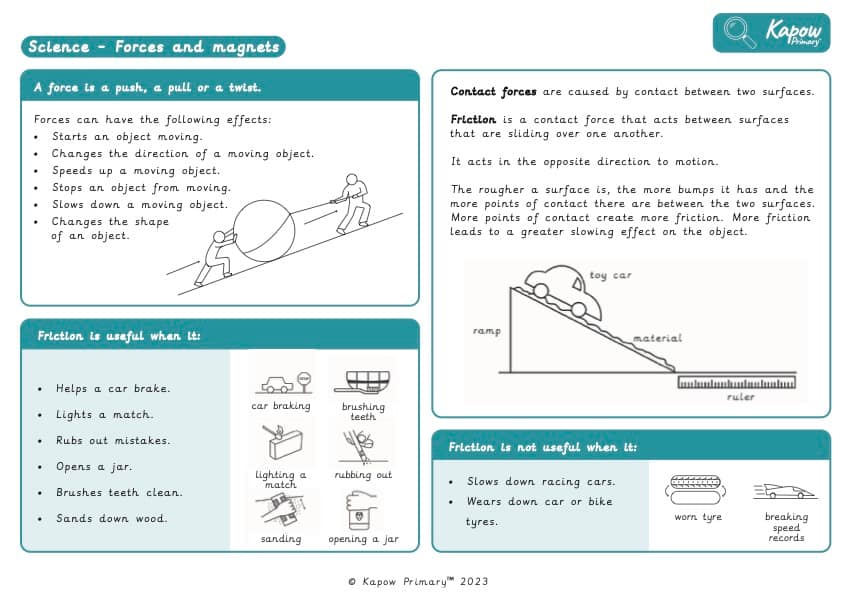
A Knowledge organiser that captures the essential knowledge and skills learnt throughout the unit Science, Year 3/4 (B), Forces and space: Forces and magnets.
This resource is designed to support the children as they explore forces and magnets. It highlights key vocabulary and concepts, including how forces can push, pull and change the movement or shape of objects. The resource explains friction as a contact force, how it affects motion and when it can be useful or problematic. It also introduces non-contact forces, such as magnetism and gravity, and explores how magnets attract or repel objects. It is perfect for consolidating essential knowledge and fostering an understanding of how forces and magnets interact in the world around us.
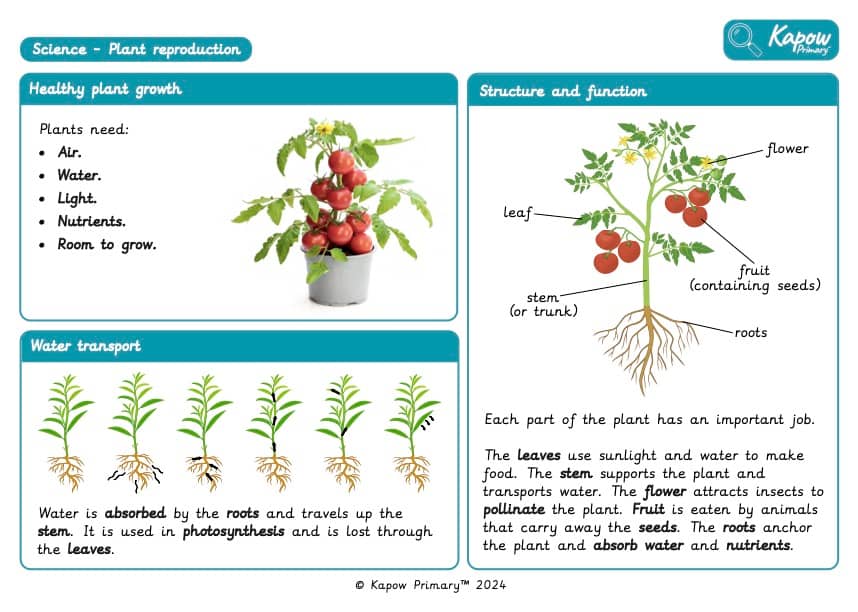
A Knowledge organiser that captures the essential knowledge and skills learnt throughout the mixed-age unit Science, Y3/4 (B), Plant reproduction.
This resource is designed to support the children as they explore the fascinating process of plant reproduction. It highlights key vocabulary, processes and concepts, such as pollination, seed dispersal and the life cycle of a flowering plant. The resource also explains the structure and function of plant parts, including roots, stems, leaves, flowers and fruits and the role of water in plant growth. It is perfect for consolidating essential knowledge and fostering a deeper understanding of how plants grow and reproduce.
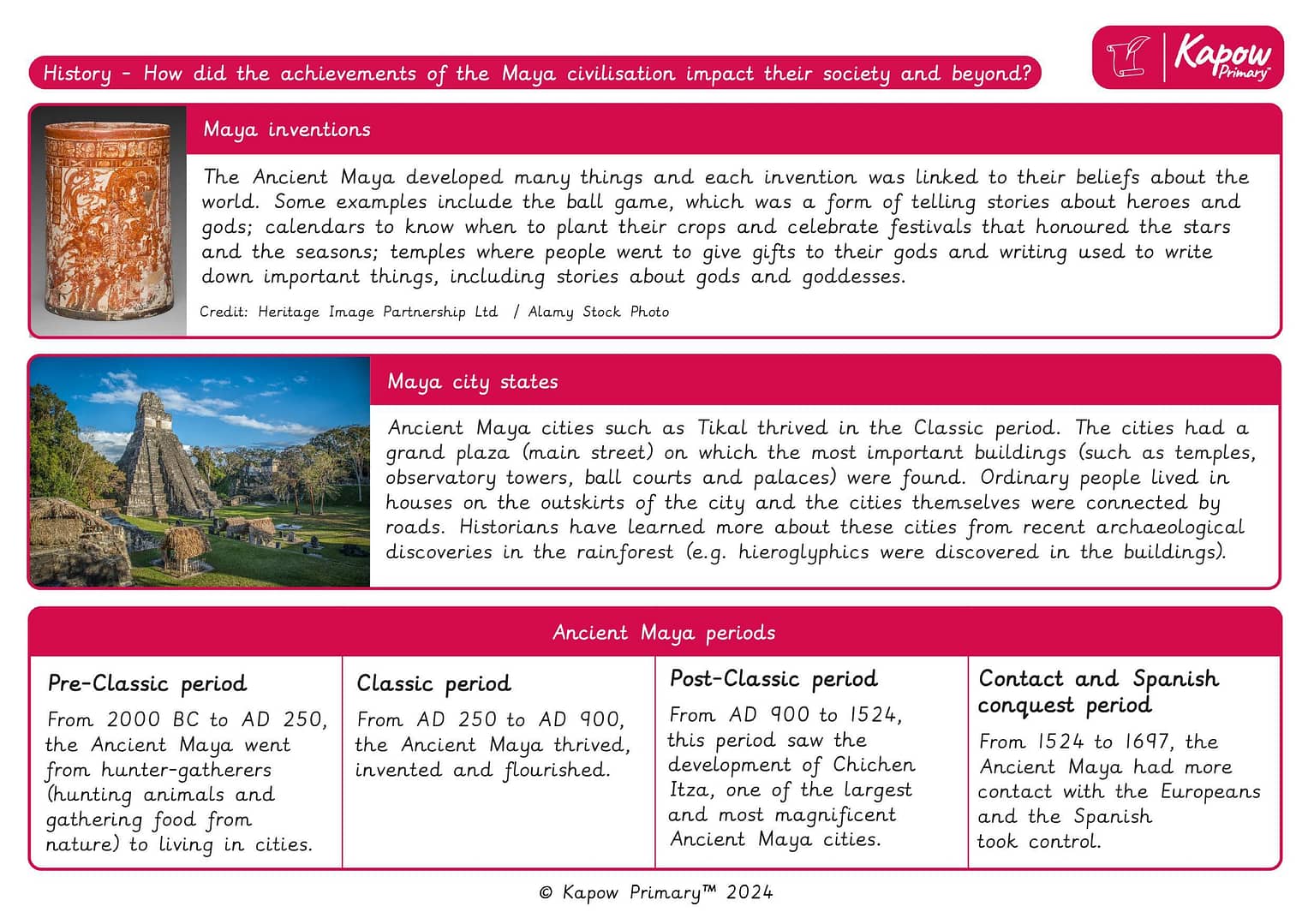
A Knowledge organiser that captures the essential knowledge and skills learnt throughout the unit History, Y3/4 (B), How did the achievements of the Maya civilisation impact their society and beyond?
This History resource is designed to support children as they explore the achievements and influence of the ancient Maya. It highlights key aspects such as their city-states, writing system, calendar, religious rituals and inventions. It also examines how the Maya adapted to life in the rainforest and how their civilisation changed over time. It is useful for consolidating essential knowledge and fostering an understanding of how the Maya shaped their society and beyond.
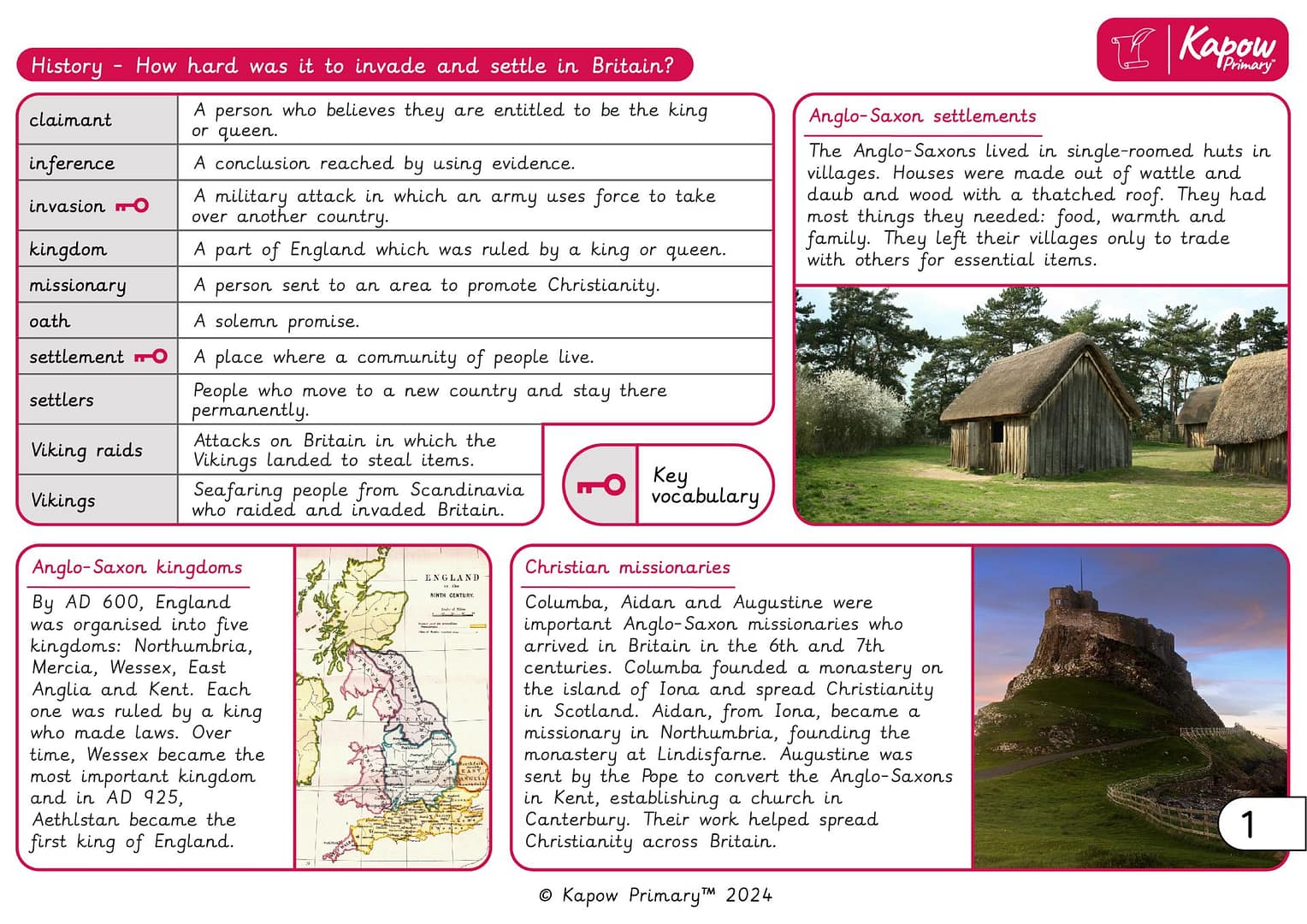
A Knowledge organiser that captures the essential knowledge and skills learnt throughout the unit History, Y3/4 (A), How hard was it to invade and settle in Britain?
This History resource is designed to support children as they explore the challenges faced by different groups invading and settling in Britain. It highlights key events and figures, including the Anglo-Saxon and Viking invasions, the establishment of kingdoms and the role of Christian missionaries. It is perfect for consolidating essential knowledge and fostering an understanding of how Britain’s history was shaped by migration and conflict.









